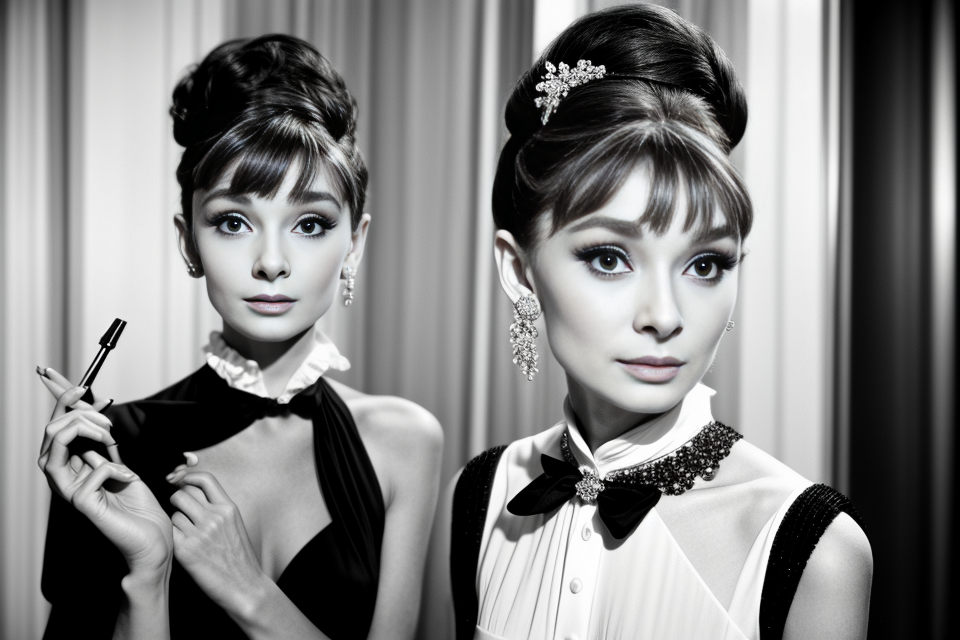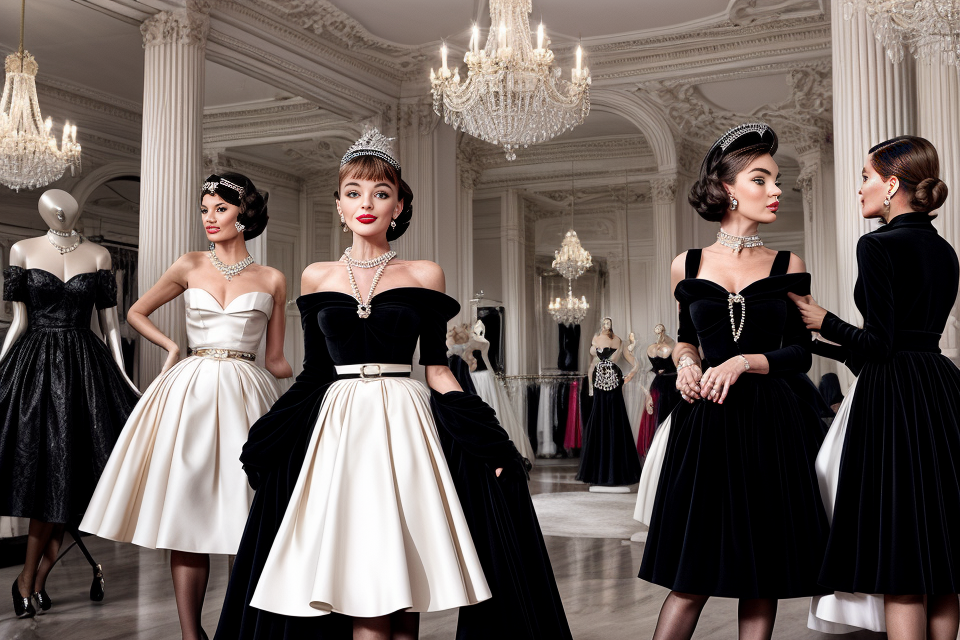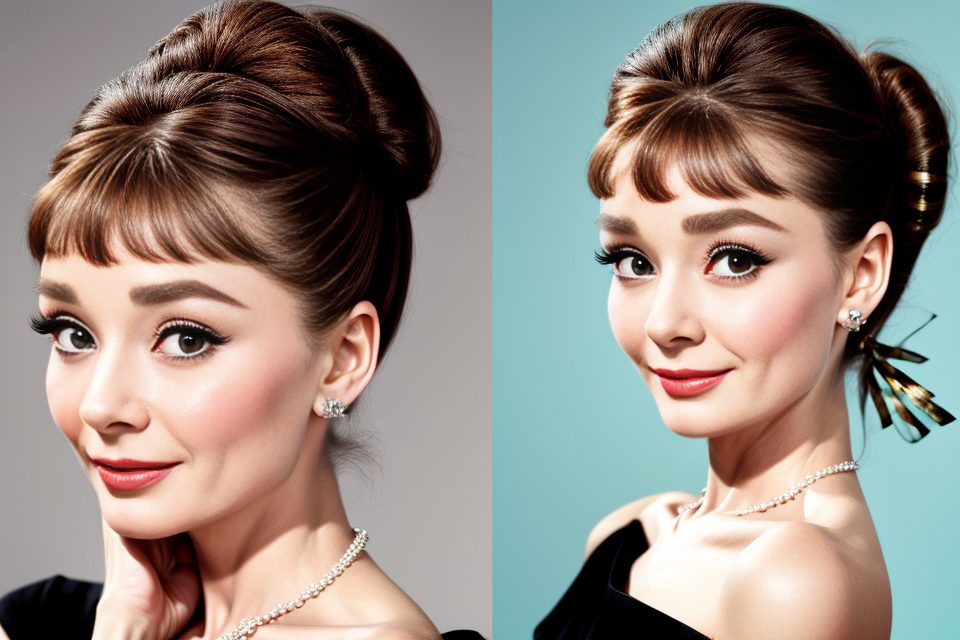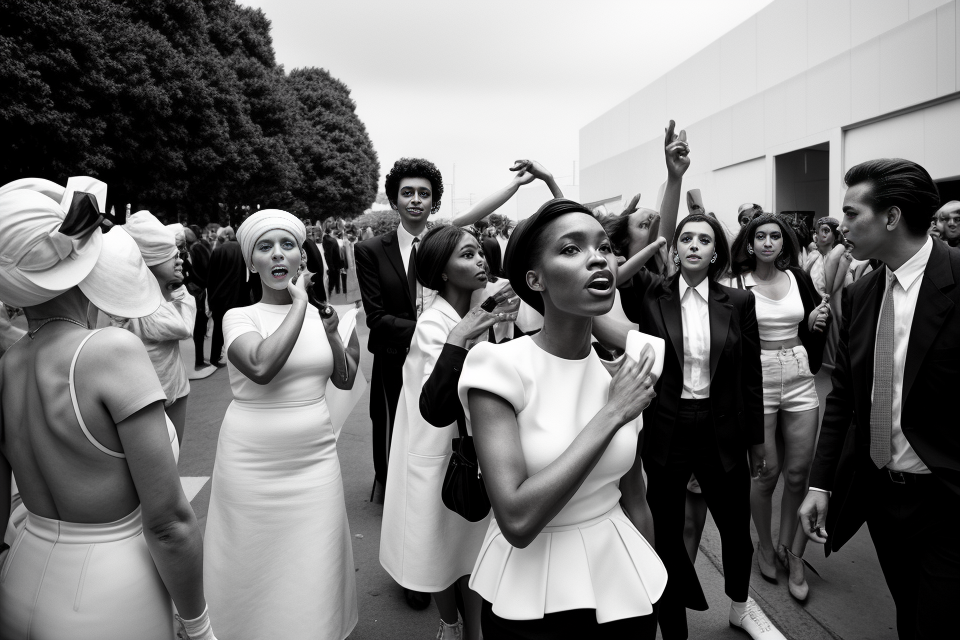
Fashion has always been a form of self-expression, and through the years, it has evolved into a multibillion-dollar industry. Fashion icons have played a significant role in shaping the industry, influencing trends, and inspiring generations. From Audrey Hepburn’s classic elegance to Kate Moss’s edgy style, the world of fashion has seen many iconic figures. But who among them can be considered the most iconic fashion figure of all time? In this article, we will explore the lives and styles of some of the most influential fashion icons and determine who has left the most significant impact on the fashion world. So, let’s dive in and find out who rules the fashion world.
The most iconic fashion figure of all time is undoubtedly Coco Chanel. Her innovative designs and daring fashion choices revolutionized the fashion industry and have had a lasting impact on the way people dress. She was the first to introduce the little black dress, costume jewelry, and the quilted handbag. Her fashion house, Chanel, remains one of the most successful and influential in the world. Her legacy continues to inspire fashion designers and influencers to this day.
Identifying the Criteria for Iconic Fashion Status
The Influence of a Fashion Icon
The influence of a fashion icon extends far beyond the realm of fashion itself. These individuals have a profound impact on popular culture, shaping the way people dress, think, and even interact with one another. To truly understand the iconic status of a fashion figure, it is important to consider the following aspects of their influence:
- Shaping the fashion industry: A fashion icon is someone who sets trends and defines style. They are often the ones who introduce new ideas and innovations to the industry, pushing the boundaries of what is considered fashionable. Through their creativity and vision, they inspire designers, stylists, and fashion houses to follow in their footsteps.
- Impact on popular culture: Fashion icons are not just influencers within the fashion industry, but also within popular culture as a whole. They become symbols of a particular era or movement, representing the spirit of a generation. They may be featured in movies, music videos, and other forms of media, helping to define the cultural landscape of their time.
- Cultural significance: Finally, a fashion icon’s influence extends beyond their lifetime. They become part of the cultural fabric, their impact felt long after they are gone. They may represent a particular value or ideal, embodying a certain aesthetic or philosophy. Their influence can even transcend borders, becoming a global phenomenon that resonates with people all over the world.
Overall, the influence of a fashion icon is multifaceted and far-reaching. They are not just figures of style, but also cultural icons whose impact is felt in many different areas of life.
Timelessness and Versatility
Classic Style
One of the key characteristics of an iconic fashion figure is their ability to transcend time. This means that their style remains relevant and timeless, even decades after it was first introduced. A classic style is one that has stood the test of time and continues to be popular and relevant even as fashion trends change. This timelessness is often achieved through simplicity, quality, and attention to detail. A classic style is not just about looking fashionable, but also about conveying a sense of sophistication and elegance.
Adaptability to Current Trends
Another important aspect of iconic fashion status is the ability to adapt to current trends while still maintaining a classic and timeless look. This means that the fashion figure can incorporate new trends into their style without sacrificing their signature look. This adaptability is what sets iconic fashion figures apart from trendy ones, who may be popular for a short period of time but quickly fall out of fashion. A true iconic fashion figure can take any trend and make it their own, while still staying true to their classic style.
Enduring Appeal
Enduring appeal is another critical aspect of iconic fashion status. This means that the fashion figure’s style continues to be popular and admired long after they are gone. Iconic fashion figures often have a unique and recognizable style that sets them apart from others, and their influence can be seen in the styles of subsequent generations. Their enduring appeal is often due to their ability to inspire and influence others, and their style continues to be relevant and admired even decades after they were first popular.
Media Exposure and Recognition
Magazines and Newspapers
One of the primary factors that contribute to an individual’s iconic status in the fashion industry is their presence in mainstream media, such as magazines and newspapers. This exposure not only increases the visibility of the individual but also reinforces their position as a trendsetter and fashion authority. Over the years, numerous fashion icons have graced the covers of various fashion magazines, including Vogue, Harper’s Bazaar, and Elle, among others. These magazines are renowned for their influence and reach, making it an essential platform for fashion figures to showcase their style and influence.
Film and Television
The role of film and television in shaping the perception of fashion icons cannot be overstated. Since the early days of cinema, fashion has played a significant role in shaping the visual language of films. Many iconic fashion figures have appeared on the big screen, either as actors or as part of a film’s costume design. These appearances have not only solidified their status as fashion icons but have also helped to immortalize their style and aesthetic. Examples of fashion icons who have made an impact in film include Audrey Hepburn, Marilyn Monroe, and Grace Kelly, among others.
Social Media and Online Presence
In recent years, social media has emerged as a significant platform for fashion figures to connect with their audience and showcase their style. With the rise of platforms like Instagram, Twitter, and TikTok, fashion icons have been able to build a dedicated following and expand their reach beyond traditional media outlets. This exposure has allowed them to engage with their audience on a more personal level, sharing insights into their life and style, and creating a more intimate connection with their fans. As a result, social media has become an essential tool for fashion figures to maintain their iconic status and stay relevant in the ever-evolving world of fashion.
Consistency and Authenticity
- Staying true to personal style
- The most iconic fashion figures have a unique and consistent personal style that sets them apart from others. They have a distinct aesthetic that they have cultivated over time, and they consistently showcase this style in their public appearances and fashion choices.
- For example, Audrey Hepburn’s classic and elegant style, with her little black dresses, pearls, and sunglasses, became her signature look and cemented her status as a fashion icon.
- Being an ambassador for the brand
- Iconic fashion figures often serve as ambassadors for various fashion brands, helping to promote and elevate the brand’s image and aesthetic. They are seen as representatives of the brand’s values and aesthetic, and their endorsement can greatly influence the brand’s success.
- For example, Kate Moss’s endorsement of the British fashion brand, Topshop, helped to elevate the brand’s image and appeal to a wider audience.
- Embracing the role of a fashion icon
- Iconic fashion figures not only have a distinct personal style but also embrace their role as a fashion icon. They understand the power of their influence and use it to inspire and shape fashion trends.
- For example, Marilyn Monroe’s iconic style, including her white dress from the film “The Seven Year Itch,” has become an enduring symbol of glamour and sex appeal, and continues to influence fashion trends to this day.
Examining the Contenders for the Title
Audrey Hepburn
Breakout role in film
Audrey Hepburn, born in Belgium as Audrey Kathleen Ruston, began her career as a film actress in the 1950s. Her breakout role came in the 1961 film “Breakfast at Tiffany’s,” in which she played the iconic character of Holly Golightly. Hepburn’s portrayal of the stylish and sophisticated Golightly solidified her status as a fashion icon and cemented her place in Hollywood history.
Fashion partnership with Givenchy
Hepburn’s partnership with French fashion designer Hubert de Givenchy was another significant factor in her iconic status. The two first met on the set of “Breakfast at Tiffany’s,” and Givenchy was immediately impressed by Hepburn’s style and grace. The designer went on to create many of Hepburn’s most memorable on-screen looks, including the little black dress from “Breakfast at Tiffany’s” and the gown she wore to accept her Academy Award for “Roman Holiday.”
Humanitarian work
In addition to her work in film and fashion, Audrey Hepburn was also a dedicated humanitarian. She worked with the United Nations Children’s Fund (UNICEF) for over a decade, serving as a goodwill ambassador and traveling to countries around the world to raise awareness about children’s issues. Hepburn’s commitment to using her platform for social good only added to her iconic status and cemented her place as a true style icon.
Marilyn Monroe
Hollywood Glamour
Marilyn Monroe’s fashion style is often associated with the quintessential Hollywood glamour of the 1950s. She epitomized the ideal of the blonde bombshell, with a curvaceous figure and a face that radiated charm and allure. Monroe’s screen presence was so captivating that she became an icon of feminine beauty, influencing generations of women who aspired to emulate her style.
Transformative Style
Throughout her career, Monroe underwent a transformation from a shy, naive ingénue to a sultry, confident sex symbol. Her style evolved along with her image, from the girl-next-door look of her early films to the more sophisticated and daring outfits of her later movies. Monroe’s fashion choices were always deliberate and calculated, reflecting her desire to project a specific image to her audience.
Enduring Legacy
Even decades after her death, Marilyn Monroe’s influence on fashion is still evident. Her most iconic looks, such as the white dress from The Seven Year Itch or the pink frock from Gentlemen Prefer Blondes, continue to inspire designers and influence trends. Monroe’s enduring legacy as a fashion icon is a testament to her ability to capture the imagination of the public and to embody the essence of Hollywood glamour.
Kate Moss
Supermodel Status
Kate Moss, a British supermodel, has been a prominent figure in the fashion industry for over three decades. She first rose to fame in the early 1990s, thanks to her waifish frame, doe-eyed expression, and effortlessly chic style. Moss’s supermodel status was cemented by her appearances on countless magazine covers, high-profile campaigns, and runway shows for top designers.
Grunge and Punk-Inspired Fashion
Kate Moss played a significant role in popularizing the grunge and punk-inspired fashion trends of the 1990s. Her effortlessly cool and androgynous style, often featuring ripped jeans, chunky boots, and oversized flannel shirts, helped to define the grunge aesthetic. Moss’s ability to seamlessly transition from high-fashion editorials to street-style staples made her a beloved and influential figure among both fashion insiders and the general public.
Brand Collaborations
Kate Moss has collaborated with numerous fashion brands throughout her career, lending her unique style and charisma to a variety of product lines. High-profile partnerships include her long-term relationship with Topshop, as well as collaborations with other brands such as Longchamp, Just Cavalli, and most recently, Equipment. These collaborations have not only helped to expand Moss’s brand as a fashion icon but have also solidified her position as a powerful force within the industry.
Elizabeth Taylor
Elizabeth Taylor was a true fashion icon of her time. She was known for her bold and colorful fashion choices, which often included diamonds and other expensive jewelry. Taylor’s iconic roles in film, such as her portrayal of Cleopatra, further solidified her status as a fashion icon.
Taylor was also known for her charitable contributions, particularly to the fight against HIV/AIDS. She was a vocal advocate for the LGBTQ+ community and used her platform to raise awareness and funds for the cause.
Despite her many accomplishments, Taylor remained humble and grounded throughout her life. She never lost her appreciation for the simple things, and she always made sure to treat others with kindness and respect.
Taylor’s impact on the fashion industry cannot be overstated. She was a true trendsetter, and her style continues to inspire designers and fashion lovers alike. Her legacy as a fashion icon will continue to live on for many years to come.
Princess Diana
Princess Diana was a fashion icon of her time and continues to be remembered as one of the most iconic fashion figures of all time. Her elegant and timeless style, fashion-forward choices, and humanitarian work have all contributed to her enduring legacy in the world of fashion.
Elegant and Timeless Style
Princess Diana’s style was characterized by her ability to seamlessly blend traditional and modern fashion elements. She was known for her love of tailored suits, luxurious gowns, and elegant accessories, which she wore with impeccable grace and poise. Her signature style, which featured a high collar, statement earrings, and a tiara, has been copied by countless women around the world.
Fashion-Forward Choices
Princess Diana was a trendsetter who was not afraid to take risks with her fashion choices. She was one of the first royal women to wear trousers in public, and she also popularized the use of shoulder pads and bold accessories. Her fearless approach to fashion inspired countless designers and helped to shape the industry as a whole.
Princess Diana’s humanitarian work had a profound impact on the world, and her fashion choices often reflected her commitment to causes close to her heart. She was known for her visits to hospitals and hospices, where she would often wear comfortable, practical clothing that allowed her to move freely and interact with patients. Her commitment to using her platform to raise awareness for important issues continues to inspire people around the world.
Jackie Kennedy Onassis
- Classic and Sophisticated Style
Jackie Kennedy Onassis is widely regarded as one of the most iconic fashion figures of all time. Her classic and sophisticated style was characterized by tailored suits, delicate jewelry, and impeccable accessories. Her fashion choices were often simple yet elegant, with a focus on quality and fit. She had a keen eye for detail and was known for her ability to effortlessly pull off even the most intricate outfits.
- Influence on First Ladies
Jackie Kennedy Onassis’s influence on fashion extended far beyond her own wardrobe. As First Lady, she set the tone for fashion in the White House and inspired countless other First Ladies to follow in her footsteps. Her influence was particularly evident during her husband’s presidency, when she was widely recognized as a fashion icon and trendsetter.
- Continued Interest and Admiration
Even decades after her death, Jackie Kennedy Onassis remains a beloved and iconic figure in the world of fashion. Her style continues to inspire designers and fashion lovers alike, and her influence on the industry is still felt today. Many designers have cited her as a major influence on their work, and her fashion choices continue to be studied and analyzed by fashion historians and enthusiasts.
The Ultimate Icon: A Comprehensive Analysis
Examining the data and evidence to determine the most iconic fashion figure of all time requires a comprehensive analysis of various criteria. In this section, we will consider the following factors:
- Influence on fashion history: The individual’s impact on the development of fashion trends and styles over time.
- Enduring appeal: The timelessness and relevance of the person’s style, even decades after their peak popularity.
- Cultural significance: The role the person played in shaping cultural attitudes towards fashion and style.
- Creativity and innovation: The individual’s contributions to the fashion industry in terms of design, technique, and concept.
- Media presence and public persona: The extent to which the person’s image and reputation have been featured in popular media and shaped public perception.
By considering these factors, we can evaluate the candidates for the title of the most iconic fashion figure of all time and determine who best exemplifies the ultimate icon.
FAQs
1. Who is the most famous fashion icon?
The most famous fashion icon is a matter of personal opinion, as different people may have different ideas about who is the most iconic fashion figure of all time. However, some of the most commonly cited fashion icons include Audrey Hepburn, Marilyn Monroe, Elizabeth Taylor, and Kate Moss. These individuals have been widely recognized for their influence on fashion and style, and their looks have been widely imitated by others.
2. What makes someone a fashion icon?
There are many qualities that can make someone a fashion icon. Some of the most important qualities include style, creativity, confidence, and the ability to set trends. A fashion icon is someone who is known for their unique and innovative approach to fashion, and who has the ability to inspire others with their style. Fashion icons can come from all walks of life, and they can be anyone from celebrities to designers to everyday people.
3. Who are some current fashion icons?
There are many current fashion icons who are widely recognized for their influence on fashion and style. Some of the most notable names include Rihanna, Beyoncé, Emma Stone, and Jennifer Lawrence. These individuals are known for their unique and bold approach to fashion, and they have been praised for their ability to set trends and inspire others with their style. They are often seen as trendsetters and influencers in the fashion industry, and they are widely followed by fans and admirers around the world.


